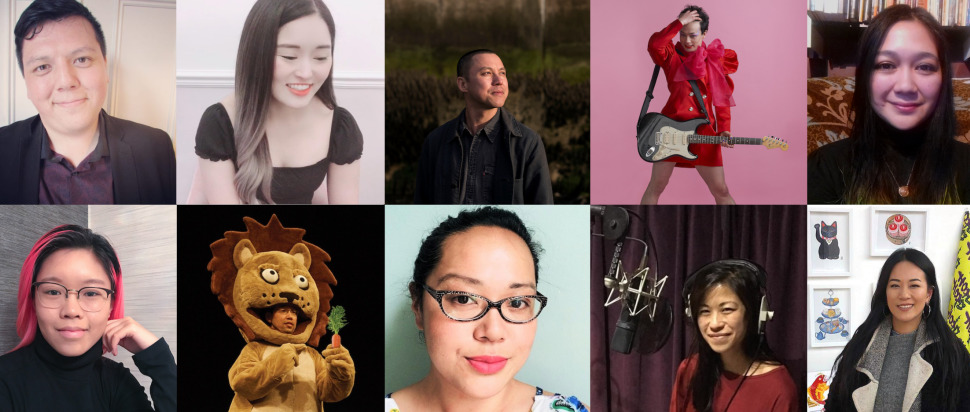We Are Here: East and South East Asian Creativity in Scotland
Responding to the recent increase in anti-Asian racism, as well as the precariousness of the creative sector, we speak to Scottish East and South East Asian creatives about staying inspired, breaking barriers and solidarity
I moved to Scotland in 2016, thinking at first that it was going to be a temporary move. Instead, I fell in love with the place and have been proud to call it my home ever since. However, this recent year-and-a-bit has been difficult to manage, not only because of the pandemic, but also because of the worldwide increase in anti-ESEA (East and South East Asian) violence and discrimination.
Around the same time that Donald Trump called COVID-19 the “Chinese Virus”, my ESEA friends and family reported experiencing racism and prejudice with increasing frequency. This was reminiscent of the 2001 foot-and-mouth crisis, which the Daily Mail named 'Sheep and Sow Sauce', and which triggered a wave of anti-Chinese sentiment, as well as the 2003 SARS outbreak, which was the first time I distinctly remember something overtly racist being said to me, by another kid in the school playground. Scotland wasn’t safe from this most recent increase in anti-ESEA rhetoric, with racially motivated attacks reported in Edinburgh, Glasgow and further beyond.
Organisations formed in response, including End the Virus of Racism, besea.n (Britain’s East and South East Asian Network) and ESA Scotland. These groups have been working not just to challenge bias against the ESEA community within British media, but also as a platform for celebration amongst British ESEA people. At a time when access to my own family and culture was limited, these organisations and celebrations encouraged me to keep going with my own creative projects.
In February 2020, I performed my show FORTUNE at the Just Start Here Performance Festival in Dumfries. FORTUNE, a one-man show about authenticity, mixed-ness and anti-Asian racism, is told through the medium of fortune cookies, and during rehearsals I had furiously adapted my script to mention virus-specific racism and my feelings of anger towards it. Once lockdown hit and live performances became impossible, the thought of having to adapt the script once again for digital performances – while also dealing with the rates of anti-Asian racism growing even further across the globe – felt overwhelming.
However, it was through my interactions with online activist and community groups that I realised a contributing factor to the media bias against ESEA people was our fundamental lack of representation in the media. I collaborated with Edinburgh-based filmmaker Jinling Wu to create The Proof, a film-poem detailing a small handful of racist micro-aggressions I’ve personally experienced, for BBC The Social. Within a day of its release, The Proof racked up thousands of views and comments from other ESEA people sharing their own stories. And while each story was individual, nuanced and moving, there was also a common through-line that linked them all: a desire to say to the rest of the world, we are here – now listen to us.
Through the pandemic, I’ve been lucky to have the opportunity to connect and engage with many ESEA creatives living in Scotland, who are similarly interested in making connections and breaking barriers through their work. I asked nine of them about their creative processes, if, and how, their identity influences their creativity, and the challenges affecting Scottish ESEA people today.
––––
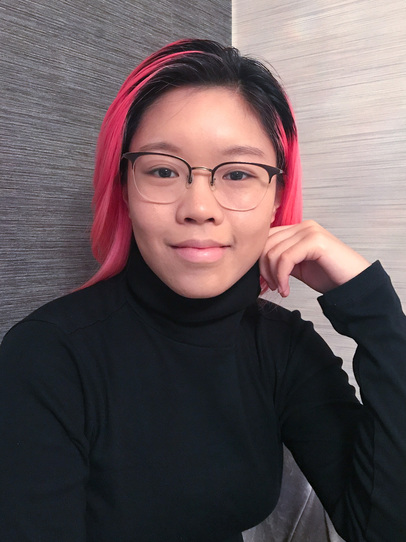
Karlie Wu 胡嘉瑤
Visual artist
Karlie Wu is one of the founders of besea.n, working alongside Mai-anh Peterson, Charley Wong, Amy Phung, Isabelle Pan and Viv Yau to help platform and champion ESEA issues throughout the UK. “It began as a shared frustration towards the sudden saturation of ESEA faces in the media in relation to coronavirus,” she explains. “This subconscious bias in the media’s choice of imagery led us to complain directly to major news sources.” Since then, besea.n has grown, not only as a force against anti-ESEA media bias, but also as a place for celebration. “In addition to being involved in data research surrounding disparities and inequalities that ESEA people face, it’s also felt really joyful to connect with others through a number of discussions and events we’ve set up,” Wu says.
In terms of her own artistic practice, Wu has been keeping busy with commissions and other projects, including her Hakka Granny video series. Hakka culture is a distinct subgroup within wider Chinese culture and in these videos, Wu takes on the persona of a Hakka grandmother in order to explain various linguistic and cultural aspects of Hakka life. “The videos started off as some fun, and I’m really surprised, honoured and touched that they have allowed others to connect with their own Hakka background, or that they remind people of their own relatives – I’m truly thankful that my nonsense can do that!”
–––
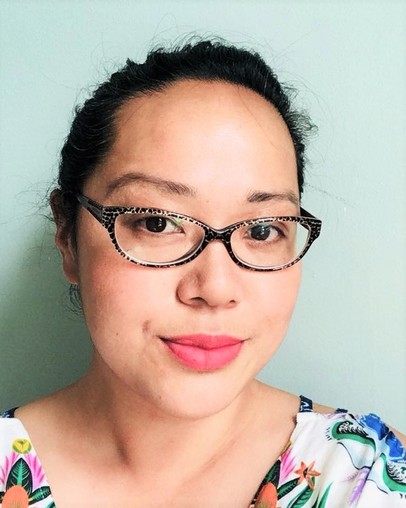
Maisie Chan
Writer
Maisie Chan, a children’s author, has been active both creatively and in terms of community-building. In 2018, she created the Bubble Tea Writers Group, a place for ESEA writers to share opportunities, ask questions and connect with each other. “I didn’t know what to call the group at first,” she tells me. “I obviously didn’t want to use ‘Oriental’ as it has negative connotations. Back then, we hadn’t heard of terms like BESEA (British East and South East Asian), and it felt like writing out East and South East Asian each time would be too much, so I decided on the image of bubble tea instead!”
The Bubble Tea Writers Group shares opportunities beyond genre, but Chan herself specialises in early readers and children’s literature. When asked about ESEA representation in UK publishing, Chan explains some of the challenges she has faced. “In the late 1990s, I studied for a year at UC Berkeley and learnt about Asian-American history, Asian-American novels and more. When I got back to the UK, there was nothing like that and there still is a gaping wide hole in terms of critical race theory. We need more BESEA writers creating content for the screen and in publishing.”
At the same time, Chan remains hopeful for the future. “I think publishers in Scotland want to increase the diversity in their books and I’m sure that with time there will be more ESEA representation in Scottish literature. I also think that my appointment as the Dr Gavin Wallace Fellow has helped to highlight that there are children’s writers here who aren’t white. I hope that my novel also helps to dispel myths about what a children’s author should look like."
–––
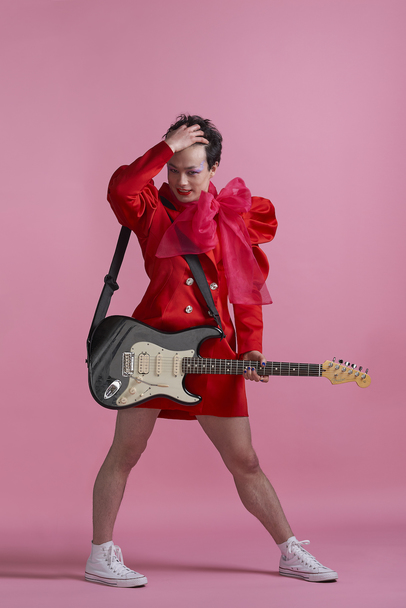
Sean Shibe
Musician
Classical guitarist Sean Shibe shares Chan’s hope for better ESEA representation. “The solutions have to be from the bottom up, and without urgent structural change, things may still not become accessible, but I do have optimism for the future,” he says.
Raised in Edinburgh, Shibe believes that his identity may have influenced his attraction to creativity. “If I was just another white kid then maybe I wouldn’t have been so determined. Instead, I already felt like an outsider, so perhaps that freed me to go in my own direction creatively.”
Shibe has gone on to become the first guitarist to receive the Royal Philharmonic Society Award for Young Artists, alongside other achievements. Even so, racialised comments are still an unfortunate feature of his life. “I’ve been told that my English is very good, and while it was a lot more oppressive when I was growing up, I think the fact that Asian men have been emasculated by Western media for hundreds of years still plays a role in how certain sections of society treat us.”
–––
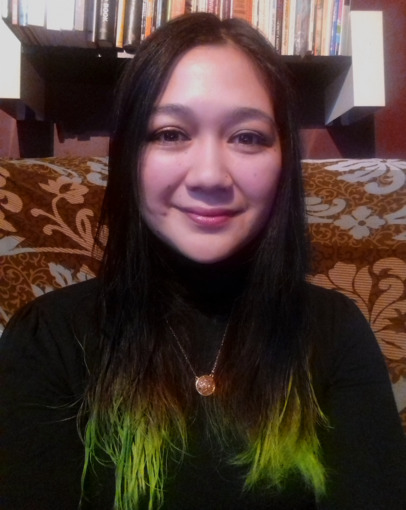
Natasha Sotsai Falconer
Illustrator
Illustrator Natasha Sotsai Falconer has used lockdown as an opportunity to explore her creativity. “The increase in anti-Asian racism in the media, together with the impact that the Black Lives Matter movement has had in the world, really made me think about my own experiences of racism, and I wanted to illustrate more of that,” she explains.
Falconer’s work is often inspired and influenced by her experiences growing up Scottish and Thai. “I was very inspired by Japanese art and pop culture as a kid. Looking for representation when growing up, you are often reminded by other children that you are difficult.” There is also often a linguistic element to her work, inspired by comics. “I moved to Scotland when I was around three and, after that, my mum was scared I wouldn’t learn English if we kept speaking Thai. It always upset me that my Thai was so basic, so I decided as an adult to learn to read and write Thai. I include it [in my work] to practise, and also because it’s a beautiful script.”
–––
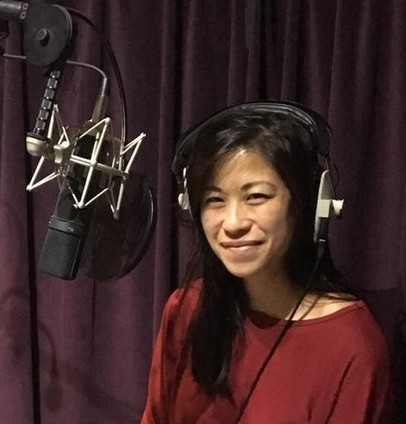
Anna Cheung
Poet
Being able to tap into and utilise different experiences of cultural identity is an important part of gothic horror poet Anna Cheung’s work. “Growing up, my mum used to tell me Chinese ghost stories and when we watched period drama together, we would talk about folklore such as Huli Jing (fox spirits), the Monkey King, Jiangshi (hopping vampires) and Chang’e (the moon goddess).”
Cheung’s debut poetry collection, Where Decay Sleeps, was supposed to be released by the Fife-based Haunt Publishing in October 2020. The decision to postpone until 2021 instead came as a relief to her. “I had been worried about how COVID would impact the book, so making that decision meant that we could take our time to give it the best possible chance to flourish,” she says. At the same time, the pandemic negatively impacted her own creative processes. “When you’re working and have additional childcare and home-schooling, you suddenly realise that writing practice becomes a luxury!” But even sparse writing still produced material. “There’s a poem in the collection titled ‘COVID-19 Delirium’, which touches upon racism during the pandemic.”
–––
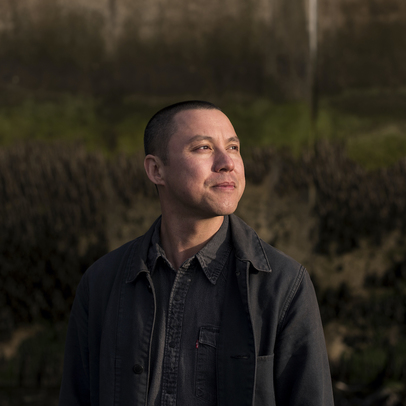
Paul Sng
Filmmaker
As a documentary director, Paul Sng has made films that amplify the voices of people who may be ignored, marginalised or underrepresented. He’s worked on projects exploring austerity, social housing, homelessness and visionary musicians, and this focus on underground narratives has influenced how he views ESEA representation in the UK arts. “When we talk about diversity and inclusion, I dislike the word ‘tolerance,’” he says. “It implies having to ‘put up’ with people who are different to us. Instead, I think we should be talking about acceptance and respect for those who we see as different.”
Sng points to work done by British ESEA media advocacy groups BEATS and initiatives such as their BEATS Test, which measures on-screen representation in media. “While representation of race and gender on screen has seen a marked improvement in the twenty-first century, roles behind the camera continue to be dominated by white, middle-class men,” says Sng. “It explains why the ESEA characters we see on our screens rarely offer much nuance. As ESEAs, we must be given greater representation and empowered to tell our own stories directly.”
–––
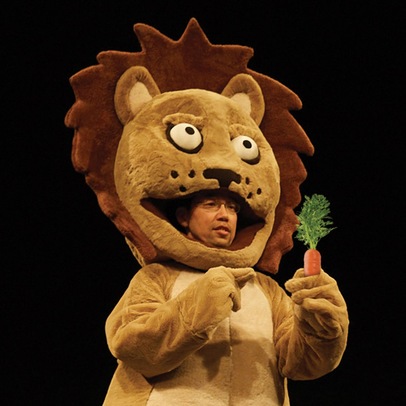
Mamoru Iriguchi
Performance maker and theatre designer
For Mamoru Iriguchi, pandemic adaptation meant creating new work. “All the pieces I’ve made since lockdown are intended for digital platforms from the start,” he explains. “I do miss live, face-to-face performances, but while that isn’t possible I decided to take the opportunity to explore ‘liveness’ digitally and to try things that I had never done before.”
In practical terms, this meant new projects such as Zoom Dark Mode, a performance using sound, candles and gallery-mode, made as part of Tramway TV. “My projects normally come with a linear narrative, in order not to leave anyone behind... However, I wanted to try something different, that calms down the audience’s mind rather than exciting them.”
Iriguchi also switched his plans for a Japanese live tour of his child-friendly performance EATEN – a show about food and food chains – to become digitally accessible instead. This became Lionel’s Scottish Kitchen, a performance which played with the concept of distance and interaction. “We focused on the fact that while people cannot travel, objects and letters can,” he explains. “We exchanged tinned haggis and teriyaki loach via magic post boxes set in the theatre in Japan and in my flat. During the show, the children wrote questions on special cards which arrived in Edinburgh in minutes, again via magical post boxes. In reality, this was all done via backstage crew’s tireless scanning and emailing, but even so I feel these tangible surprises worked refreshingly well for the audience!”
–––
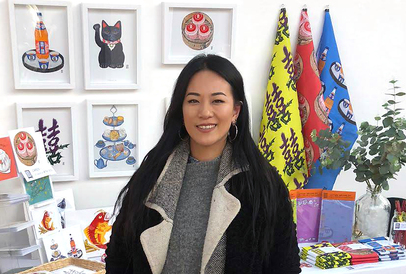
Sarah Kwan
Artist
Representation starts at home for Sarah Kwan, whose work often fosters the positive connections that bring Scottish and Chinese culture together in fun, colourful and light-hearted ways (for example, teacakes served in a bamboo steamer). “I certainly wasn’t aware of any successful Chinese artists based in Scotland, more specifically Scottish-Chinese female artists, when I was growing up,” she says. “I think there should be a fairer representation of Scottish ESEA communities within the arts and general media. The issue is that more positive representation of ESEA people needs to be shown in general. BAME (Black, Asian and Minority Ethnic) children especially need to be shown that there is a place for them in every industry.”
Kwan has also been holding online craft workshops with ESA Scotland, which have helped with feeling connected still. “ESA Scotland are trying to hold more events and create projects to support the ESEA community, and also to connect different communities together – it’s exciting to see where that will lead!”
–––
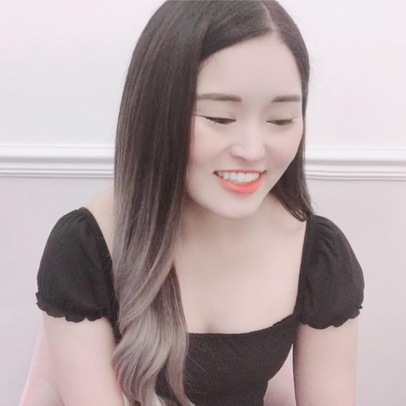
Taylor Roh
Musical theatre performer and singer-songwriter
Taylor Roh, a musical theatre performer and singer-songwriter prominent in Seoul’s indie music scene, moved from South Korea to Glasgow during the pandemic to pursue an MLitt degree in Theatre Studies from the University of Glasgow. She also produces her own project over social media called #MusicallyESEA.
“#MusicallyESEA can best be described as a project in which I explore the possibilities of non-traditional, colour-conscious casting of ESEA people in Western musical theatre,” Roh explains. “Ever since I was little, I knew I wanted to do musical theatre. I would draw pictures of Annie, except when I drew her she didn’t have curly red hair but instead long, straight black hair like me! On some level, I’m still that same little girl who just wants people who look like her onstage.”
Roh has no regrets about moving half-way round the world during a pandemic. “One thing I worried about was that I was coming from Korea, a very homogenous society where nearly everyone is Korean, and as such I never had to deal with COVID-related racism there. As I was preparing to come to Glasgow, I was reading stories in the news about the surge in hate crimes towards ESEA communities around the world. Although I’ve experienced a handful of racially-motivated incidents, on the whole, people have gone above and beyond to support me. I’m also very lucky that so many of my loved ones in Glasgow are allies to the ESEA community and that they have offered me a lot of support, especially in the aftermath of the Atlanta shooting. Their love outweighs the negative. I feel really fortunate to be part of the artistic community here and to call Glasgow my home.”
This is the third of six extended features exploring the arts in 2021, produced with support from Edinburgh International Festival
